This is a drawing of Jupiter and its magnetosphere showing the magnetic field lines, the Io torus, and the plasmasheet (part of the plasmasphere)
Click on image for full size
JPL
Saturn's Plasmasphere
Saturn's plasmasphere is pretty big. Most of the plasma comes from the donut-shaped cloud of material from Titan and the other icy moons.
Besides ions and electrons, the plasmasphere also contains very energetic particles, which contribute to the radiation found in this environment.
Particles enter the plasmasphere from the atmosphere as well as the magnetotail. Particles leave the plasmasphere when they drop too far along the magnetic field lines at the north and south poles. When these particles collide with the atmosphere, they create the aurora.
You might also be interested in:
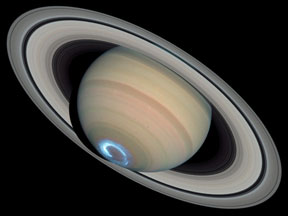
Have you ever seen the Southern or Northern Lights? Did you know that other planets (besides Earth) have them too? Scientists call these cosmic light shows the "aurora". Saturn is one of the planets that
...more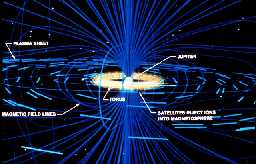
Saturn's plasmasphere is pretty big. Most of the plasma comes from the donut-shaped cloud of material from Titan and the other icy moons. Besides ions and electrons, the plasmasphere also contains very
...more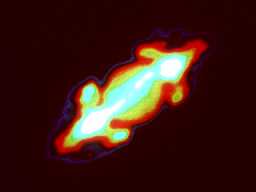
La plasmasfera de Saturno es bastante grande. La mayoría del plasma proviene de una nube con forma de rosca (toroide) de material de Titán y otras lunas heladas. Aparte de iones y electrones, la plasmasfera
...more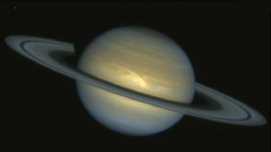
The most important motions in the atmosphere are winds. The major winds in Saturn's atmosphere are the zonal winds which are made of zones and belts. Zones and belts blow in opposite directions around
...more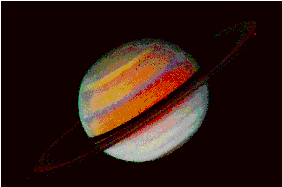
The clouds on Saturn, like Jupiter, are divided into stripes called "belts and zones". In a belt, very powerful winds blow one way. In a zone, very powerful winds blow the other way. These kinds of winds
...more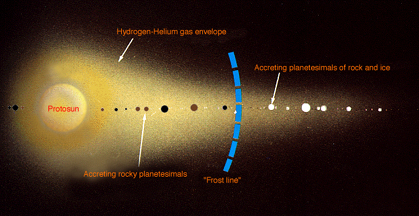
The position of the planets in the solar nebula affected how big they became and what they were made of. The blue line in the picture shows where it became so cold that ice began to form. Planets that
...more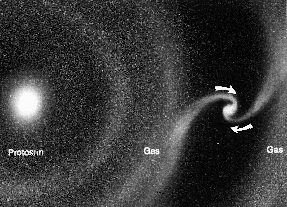
As shown in this picture, while they were forming in the solar nebula, the core of the planets-to-be drew material to themselves from the cloud of gas and dust around them. The bigger planets-to-be were
...more














